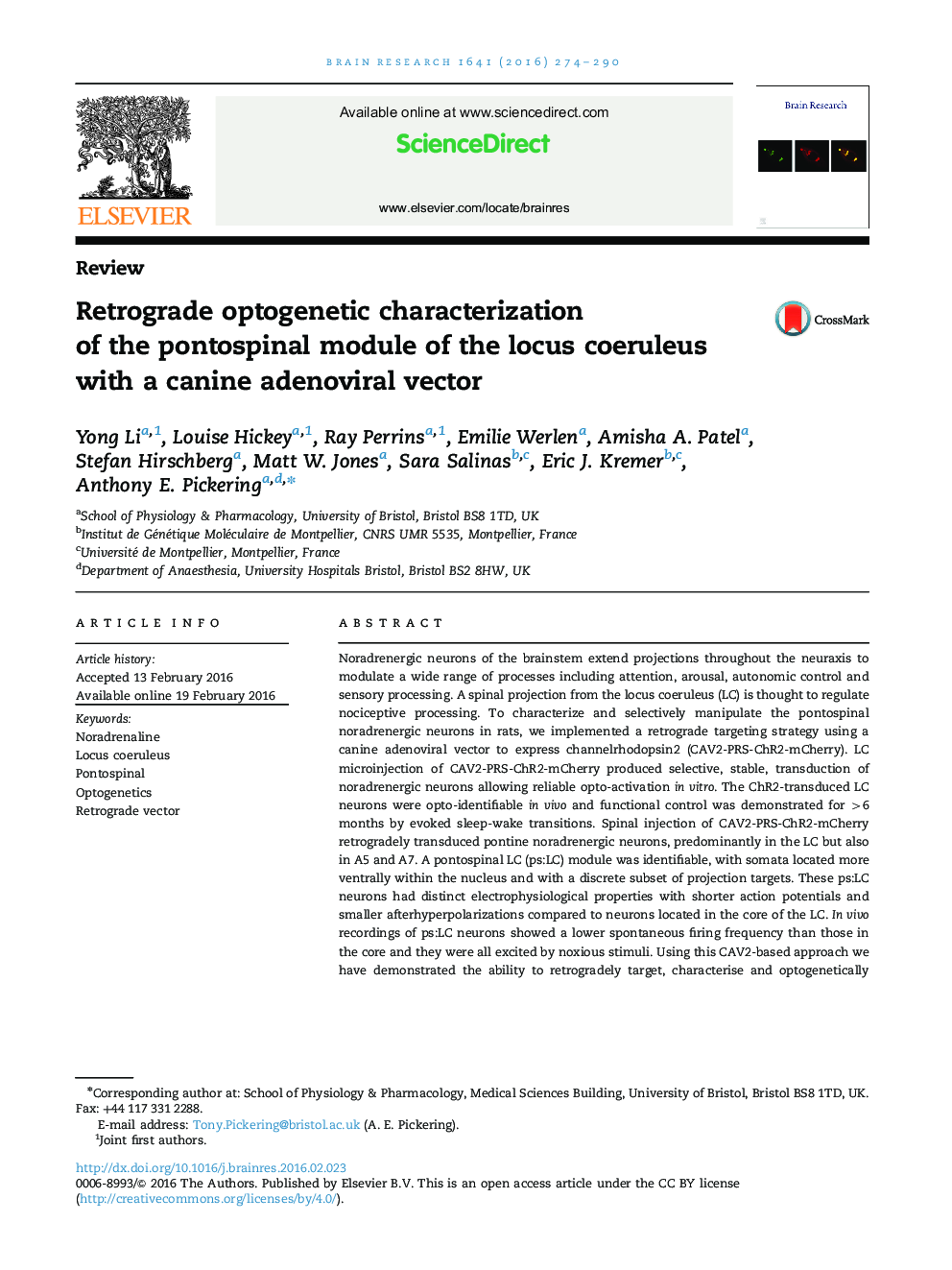| کد مقاله | کد نشریه | سال انتشار | مقاله انگلیسی | نسخه تمام متن |
|---|---|---|---|---|
| 6262527 | 1292358 | 2016 | 17 صفحه PDF | دانلود رایگان |

- Validated a canine adenoviral vector to transduce noradrenergic neurons.
- Robust and efficient retrograde optogenetic targeting of locus coeruleus.
- Pontospinal neurons of the locus coeruleus form a discrete module.
Noradrenergic neurons of the brainstem extend projections throughout the neuraxis to modulate a wide range of processes including attention, arousal, autonomic control and sensory processing. A spinal projection from the locus coeruleus (LC) is thought to regulate nociceptive processing. To characterize and selectively manipulate the pontospinal noradrenergic neurons in rats, we implemented a retrograde targeting strategy using a canine adenoviral vector to express channelrhodopsin2 (CAV2-PRS-ChR2-mCherry). LC microinjection of CAV2-PRS-ChR2-mCherry produced selective, stable, transduction of noradrenergic neurons allowing reliable opto-activation in vitro. The ChR2-transduced LC neurons were opto-identifiable in vivo and functional control was demonstrated for >6 months by evoked sleep-wake transitions. Spinal injection of CAV2-PRS-ChR2-mCherry retrogradely transduced pontine noradrenergic neurons, predominantly in the LC but also in A5 and A7. A pontospinal LC (ps:LC) module was identifiable, with somata located more ventrally within the nucleus and with a discrete subset of projection targets. These ps:LC neurons had distinct electrophysiological properties with shorter action potentials and smaller afterhyperpolarizations compared to neurons located in the core of the LC. In vivo recordings of ps:LC neurons showed a lower spontaneous firing frequency than those in the core and they were all excited by noxious stimuli. Using this CAV2-based approach we have demonstrated the ability to retrogradely target, characterise and optogenetically manipulate a central noradrenergic circuit and show that the ps:LC module forms a discrete unit.This article is part of a Special Issue entitled SI: Noradrenergic System.
Journal: Brain Research - Volume 1641, Part B, 15 June 2016, Pages 274-290